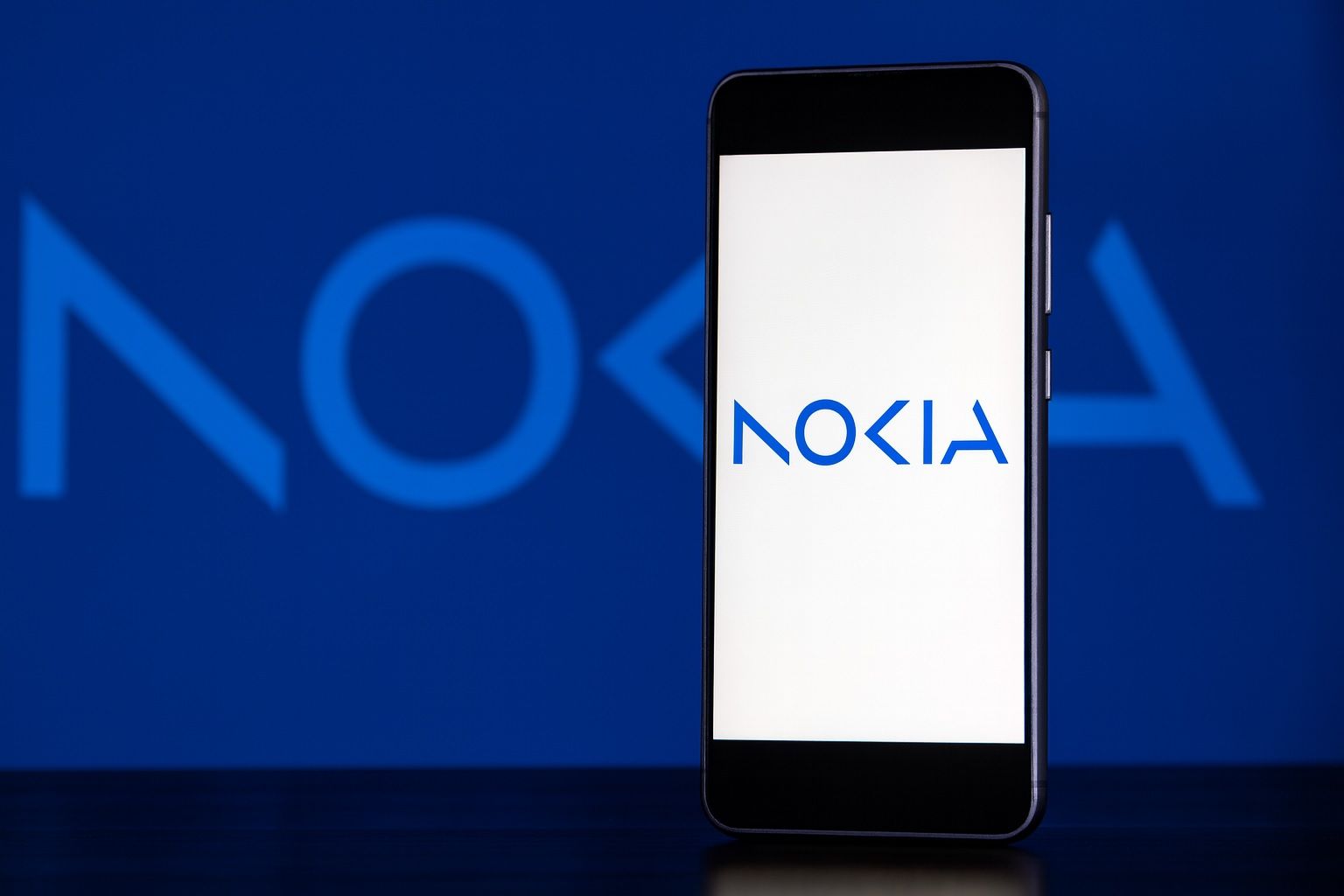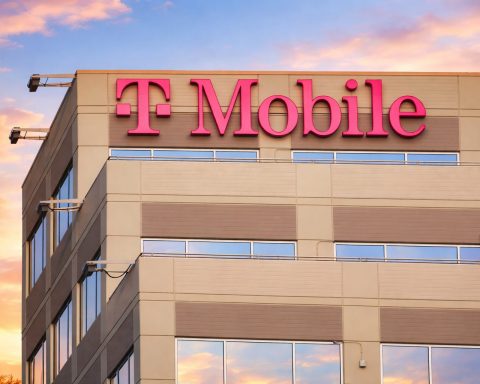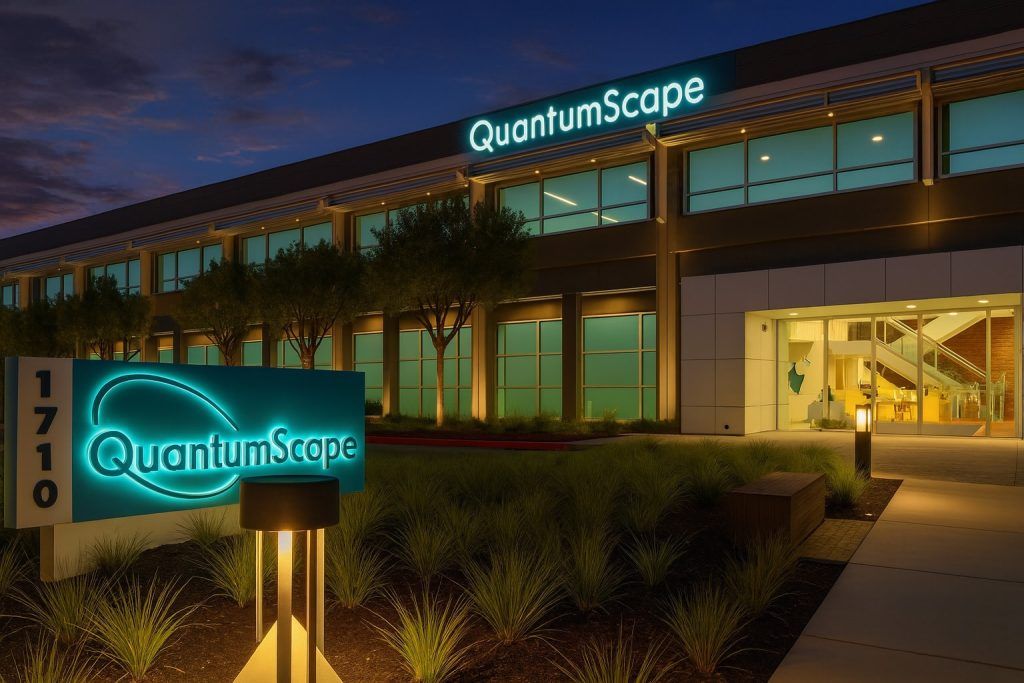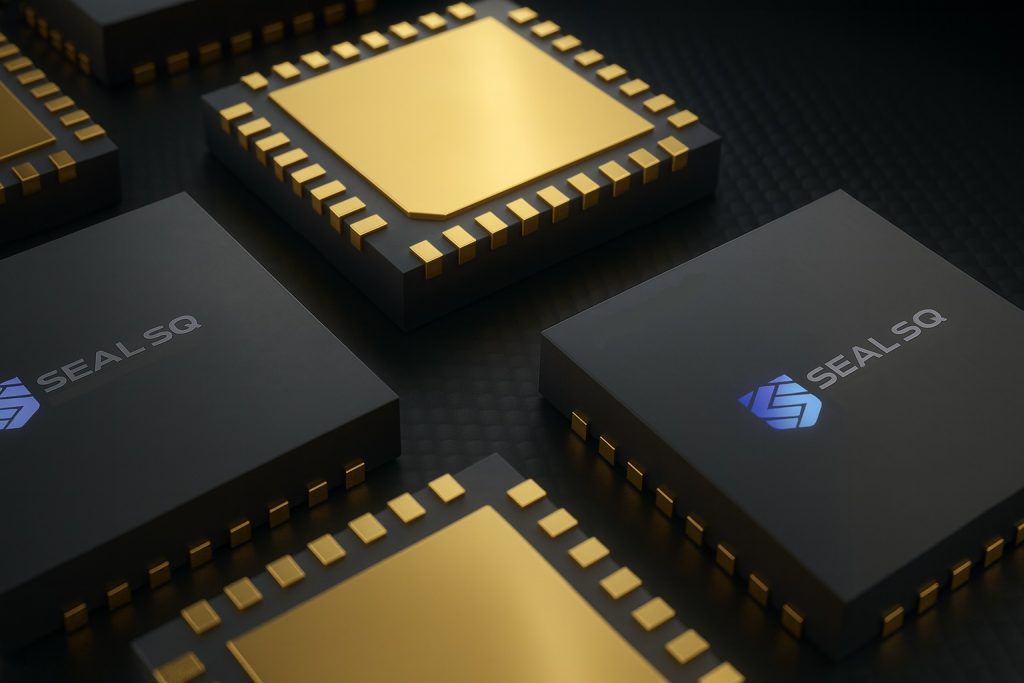- Stock surge: Nokia’s U.S. ADR (NYSE:NOK) has surged in October, hitting multi-year highs. The share price climbed ~14% in early Oct (reaching a 52-week high near $5.49 on Oct. 14) [1]. As of Oct. 22, Nokia shares are trading in the mid-$5 range (up about 21% over the past month [2]). Helsinki-listed stock similarly hit multi-year highs (~€4.84) during the rally [3].
- 5G deal flow: Investors cheered a string of major 5G contracts. On Oct. 14 Nokia extended its 5G network partnership with Vodafone/Vodacom across Europe and Africa [4]. In the UK, the newly merged “Vodafone Three” awarded a ~£2 billion 5G rollout contract split between Ericsson and Nokia to upgrade ~7,000 sites [5]. Nokia also won a “green” 5G deal with Rakuten Mobile in Japan (using its energy-saving optical gear) and expanded a 5G core upgrade with Finland’s Elisa (targeting ~20% energy savings) [6].
- Earnings on tap: Nokia is set to report Q3 results on Oct. 23. Analysts expect roughly €0.06 EPS on €4.6 billion revenue [7], after Q2 sales beat estimates (~$5.34 B) but EPS missed ($0.05 vs $0.06 forecast) [8]. Nokia had trimmed its 2025 profit guidance in July (to €1.6–2.1 billion) due to tariffs and a strong dollar [9].
- Strategic pivot: Under new CEO Justin Hotard (ex-Intel), Nokia is accelerating into AI and advanced networking. It completed a $2.3 billion takeover of U.S. optical vendor Infinera (approved in Feb 2025) [10] to boost data-center and 5G backhaul capacity. In early Oct, Nokia licensed Hewlett Packard Enterprise’s AI-powered RAN (radio access network) controller technology for its MantaRay SMO platform, and even hired the development team to enhance AI-driven automation [11]. These moves aim to grow Nokia’s higher-margin optical, cloud and AI businesses.
- Analyst outlook: Wall Street is cautiously bullish. The consensus rating is “Moderate Buy,” with a 12‑month target around $5.3–$5.5 [12] [13]. MarketBeat notes that 6 of 8 recent analyst ratings are Buys, averaging a $5.32 target [14]. BNP Paribas upgraded Nokia to “Outperform” (target $5.00) [15]. At current prices, consensus forecasts imply only modest EPS growth (~€0.34 in 2025 [16]), suggesting limited upside.
- Competition & headwinds: Nokia’s rally comes amid mixed industry news. Rival Ericsson reported blowout Q3 results on Oct. 14 (outperforming forecasts) and saw its stock jump ~13% [17], reflecting gains in North America where Nokia has lost ground. China is reportedly tightening security reviews on Nokia/Ericsson gear [18], potentially limiting sales in that market. Global telecom capex is flat-to-declining (per Dell’Oro), making the equipment market highly competitive. Nokia has already exited Russia over sanctions, and media reports even suggest it may divest non-core assets (e.g. HERE maps) to focus on networks. On the positive side, Hotard notes that rising NATO defense budgets (targeting ~5% of GDP) could boost demand for Nokia’s secure networking systems [19].
Recent Stock Run-Up and Market Context
Nokia’s stock has roared higher in October, buoyed by a string of positive catalysts. The ADR (ticker NOK on NYSE) jumped roughly 14% in early October, briefly touching about $5.49 on Oct. 14 [20]. By Oct. 15 it traded near $5.54 [21]. According to MarketBeat, shares recently opened around $5.76 (with a 12-month high of $5.79) [22]. Overall, U.S.-listed Nokia shares are now up ~21% in the last month and ~12% year‑to‑date [23], significantly outpacing many tech peers. Helsinki-traded Nokia (NOKIA.HE) also rallied, hitting highs near €4.84.
This rally has pushed valuation multiples above recent medians: Nokia now trades around 28× forward earnings [24], higher than its historical norm but still below industry telecom-tech averages. The balance sheet remains solid (debt/equity ~0.2, current ratio ~1.5 [25]), and strong free cash flow supports a near-3% dividend [26]. In early October Nokia’s board approved issuing 120 million new shares (effective Oct. 3) to cover employee equity plans [27]. The slight dilution is largely offset by a recent share cancellation, and is expected to fund talent and M&A without materially hurting EPS.
Technicals now look stretched: investing.com labels Nokia a “Strong Buy” (50- and 200-day moving averages rising) [28], but the 14-day RSI has climbed into the mid-70s (overbought) [29]. Traders caution that the stock may pause or pull back into the mid-$5.40–$5.20 range before moving higher. However, the trend is firmly up, and most analysts see any dip as a buying opportunity.
Major 5G Deals and Partnerships
The latest rally was largely fueled by new 5G contracts and partnerships. On Oct. 14 Nokia announced it would extend its strategic 5G network partnership with Vodafone/Vodacom across Europe and Africa [30]. Under the five-year agreement, Nokia will deploy its latest AirScale 5G equipment (Massive MIMO, ReefShark chips, etc.) and AI-driven network management (MantaRay SMO) across Vodafone’s networks in Europe and Africa [31] [32]. Nokia emphasized this will include deploying Africa’s first dual-band 5G Massive MIMO radios and consolidating network management with AI automation [33] [34].
In the UK, the newly merged Vodafone-Three (Vodafone Group/CK Hutchison) awarded a combined £2 billion 5G contract to Ericsson and Nokia [35]. Ericsson is the primary vendor (contract ~12.5 billion SEK), while Nokia will supply radio-access and core-network gear to roughly 7,000 sites [36]. This marks Nokia’s return as a supplier to the UK network after the Vodafone–Three merger, and is billed as part of an £11 billion plan to build one of Europe’s most advanced 5G networks [37].
Nokia also highlighted wins in Asia. It secured a “green” 5G network deal with Rakuten Mobile in Japan, deploying Nokia’s energy-saving optical transport gear that reportedly cuts network power use by ~24% [38]. In Finland, Nokia expanded a long-term contract with Elisa to upgrade the mobile core network – the project targets ~20% energy savings through modernized equipment [39]. Each of these deals underscores Nokia’s focus on sustainable, high-efficiency 5G solutions.
These contract announcements have boosted investor confidence. Analysts note that an expanding deal pipeline could fill order books into 2026, helping to lift Nokia out of its recent sluggishness. “Major 5G contracts” with blue-chip carriers reassured the market that Nokia is still very much in the game, especially in Europe and emerging markets [40]. The wave of contract wins was a key factor in the mid-October stock surge [41] [42].
Q3 Earnings and Financial Outlook
Nokia reports Q3 2025 results on Oct. 23, after markets close. Consensus estimates (LSEG/Thomson Reuters) project roughly €0.06 earnings per share on €4.6 billion revenue [43]. That follows a Q2 (ended June) where revenue was $5.34 billion (above forecasts) but EPS only $0.05 (slightly below forecasts) [44]. Nokia warned back in July that U.S. tariffs and a strong dollar could cut profits, trimming full-year operating profit guidance to €1.6–2.1 billion [45] [46]. A key watch in the Q3 report will be whether management tightens or lifts that outlook. According to Reuters, Nokia’s forecast was slightly increased (to €1.7–2.2 B) after Q3 sales showed healthy growth (see below) [47].
Q3 profit beat: In fact, Nokia has already reported strong Q3 results. On Oct. 23, Nokia said operating profit came in at €435 million, well above the €342 M analysts had expected [48]. Net sales rose 12% year-on-year to €4.83 billion (vs. ~€4.6 B consensus) [49]. The jump was driven by big growth in its Optical Networks and cloud services businesses. Nokia noted that AI and cloud customers (including data-center operators) now account for ~6% of group sales and 14% of its network infrastructure sales [50]. Optical segment sales jumped 19% (constant FX) on strong demand for high-speed fiber transport gear [51]. In a call, CEO Hotard said “AI and data center demand continues to be robust – in fact, it continues to accelerate from our perspective” [52].
These results lifted the stock on release day. Reuters reported Nokia’s shares jumped about 10.6% (to €5.20) in early trade on Oct. 23, their highest level in over three years [53]. The beat on optical and cloud demand also gave management room to slightly raise the full-year profit outlook: operating profit guidance was nudged to a range of €1.7–2.2 billion [54]. This marks the first upgrade after earlier cuts. Notably, Nokia attributed the revision partly to accounting changes for its venture funds, as it decided to scale down passive investments [55].
Despite the upbeat print, challenges remain. Reuters noted that Nokia has lost market share in North America – for example, U.S. carrier AT&T is phasing out Nokia 5G gear in favor of Ericsson (Nokia won only one of the two big North American vendors) [56]. CEO Hotard has said this is largely behind them; Nokia walked away from some contracts (and exited Russia) in order to focus on core markets. On the earnings call, management will be closely watched for Q4 guidance and any comments on customer spending trends (5G capital budgets have been delayed by many carriers).
Strategic Shift: AI, Optical and New Leadership
A central theme of recent Nokia strategy is leveraging new technology trends. Under CEO Justin Hotard (who took the helm in April 2025), Nokia is pivoting more aggressively toward AI, software, and high-speed optical networking. The $2.3 B Infinera acquisition (closed in 2024, EU-approved in Feb 2025) is a cornerstone of this shift. Infinera brings advanced photonic integrated circuits and DWDM optical transport systems, which bolster Nokia’s offerings to cloud/data-center customers [57]. The Q3 report confirmed this: optical networks revenue grew strongly, reflecting the Infinera pull-through [58].
Another key move was in October’s partnership with HPE. Nokia licensed HPE’s RAN Intelligent Controller (RIC) technology to enrich its MantaRay SMO platform [59]. MantaRay is Nokia’s cloud-native AI/automation suite for managing mobile networks (including O-RAN/AI-driven radios). The HPE deal not only adds valuable software assets but also transferred HPE development talent to Nokia’s R&D teams [60]. Nokia’s press release stressed that this strengthens its AI-driven automation, enabling customers to run more complex multi-vendor networks and prepare for 6G [61]. In short, Nokia is assembling intellectual property and talent to compete in the emerging “network AI” space.
Market watchers see both promise and risk. On one hand, these investments could position Nokia for higher-margin growth areas, differentiating it from being just a radio-access vendor. On the other, the transition will take time. Ts2 analysts call Nokia a “show me” story – the company boasts a strong cash position and a history of beating forecasts, but it must prove that new strategy translates into higher profits [62]. For now, investors are betting that the combined 5G+AI push will gradually bear fruit in 2026 and beyond [63] [64].
Competition and Regulatory Headwinds
Nokia operates in a tough competitive landscape. Its Nordic rival Ericsson is a particular benchmark. Ericsson reported record results in Q3: despite a 9% sales drop, it beat margin expectations, largely thanks to cost savings and its dominant U.S. presence [65]. Ericsson’s shares jumped ~13% on its earnings beat [66]. Analysts note that Ericsson’s portfolio (especially with a recent $14 B AT&T 5G deal) has outperformed Nokia’s in North America [67] [68]. Nokia thus still trails in carrier radio sales there, which may limit short-term growth.
Meanwhile, Huawei remains the global leader (outside the U.S. ban), though not publicly traded. Huawei’s continued strength in Asia has put pressure on both Nokia and Ericsson. In fact, recent reports suggest China is pressuring carriers to curb use of European suppliers. A Financial Times story (cited by Reuters) said China’s Cyberspace Administration may require “black box” security reviews for Nokia/Ericsson equipment [69]. If enacted, this could slow sales approvals and advantage domestic vendors. Nokia management has lobbied Brussels to tighten 5G security rules on Huawei, arguing for reciprocity. Such geopolitical “tit-for-tat” is swirling in the background [70], though no formal policy changes in Europe have occurred as of Oct 2025.
Regulatory and macro headwinds also include U.S. tariffs (on Chinese gear components) and currency swings. Nokia cited both in its July profit warning [71]. The recent stabilization of the dollar has helped relative to earlier in the year. Finally, global 5G/6G capex was forecast flat by analysts like Dell’Oro [72], meaning carriers are in no rush to spend beyond core upgrades. In this environment, Nokia is focusing on niche growth areas: for example, it is actively pitching into defense and critical infrastructure. CEO Hotard pointed out that NATO’s pledge to raise defense spending (to 2–5% of GDP) will open opportunities for secure 5G/private networks [73]. Nokia has already won military and government contracts (e.g. with France and the U.S.), and it is ramping efforts with partners to provide deployable 5G systems for battlefield use. These efforts may help diversify growth if traditional telco spending remains sluggish.
Analyst Commentary and Investor Sentiment
Most analysts are cautiously optimistic on Nokia’s mid-term prospects, but tempered on near-term upside. As of mid-Oct, the consensus recommendation is “Moderate Buy” [74]. MarketBeat reports a consensus 12-month target of about $5.32 [75], only slightly above current levels. In a recent analysts’ round-up (Oct 20), MarketBeat noted that 5 of 7 analysts rate Nokia a Buy, 1 a Hold, and 1 a Sell [76]. The average target was mid-$5s [77] [78]. Moody’s and other ratings agencies regard Nokia’s credit as investment-grade (Fitch affirmed BBB- in Sep 2025), which caps any near-term upside from leverage.
In commentary, bears point to Nokia’s low profit margins (operating margin ~4% in Q3 [79]) and caution that carriers may postpone network upgrades. Bulls counter that Nokia’s cash-rich balance sheet, recurring services business, and healthy dividend (near 3%) provide a floor for the stock [80]. Some investors highlight Nokia’s track record of beating consensus (~75% of quarters) and its solid free cash flow [81]. On social media and trading forums, sentiment has turned bullish after the rally, but some traders warn of profit-taking given the stretched valuation.
One immediate technical concern is the overbought condition. The recent upside lift pushed Nokia’s 14-day RSI into the 70s [82]. Short-term traders expect a pause: analysts at TS2 (TechStock²) wrote that “a pullback or consolidation around $5.40–$5.20 is possible” [83]. They note the key pivot resistance at ~$5.56–5.60, which the stock briefly touched [84]. However, if Nokia can digest the pullback and maintain support above ~5.00, the medium-term trend remains intact.
Outlook and Forecast
Looking ahead, Nokia’s stock outlook is cautiously positive but hinges on execution. Short term (next few weeks), the focus is on the Q3 report and management commentary. Investors will watch whether Nokia can turn its backlog of 5G deals into actual sales and improved margins. Full-year guidance was just raised slightly [85], suggesting that much of 2025 is now committed – future gains will depend on 2026 targets. Many analysts point out that current price already reflects a best-case scenario for these deals. For example, one note observed that while recent wins and cost cuts have improved sentiment, the earlier guidance cuts mean “output may lag until late 2025” [86].
Over the medium term (6–12 months), the stock likely requires new catalysts. If Nokia can translate optical/AI investments into accelerating revenue growth in 2026 (especially as 5G buildouts pick up and defense spending flows), its valuation could re-rate. Analysts’ 12-month targets clustered around $5–$6 [87] imply roughly 10–20% upside at most. Some longer-horizon bulls argue Nokia could surprise to the upside: with a 3% dividend and a stable network equipment base, even modest growth would lift returns. On the flip side, if global carriers continue to delay 5G expansion, Nokia’s backlog could slow, and valuation pressure would mount.
In sum, Nokia enters the final week of October riding a wave of positive momentum – trading at its highest level in years and buoyed by high-profile contract wins and a promising new CEO strategy [88] [89]. For now, investors remain cautiously upbeat: as one analyst put it, Nokia has momentum on 5G deals and AI, but it still needs to “prove that these strategic moves will translate into stronger growth and shareholder returns” in 2026 and beyond [90]. The coming quarters will tell whether this is a sustaining upswing or a temporary rally.
Sources: News and data from TechStock² (ts2.tech) [91] [92] [93] [94], Reuters (Nokia/Ericsson reports) [95] [96] [97] [98], Nokia press releases [99] [100], and market research outlets (MarketBeat [101], Nasdaq/RTT News, etc.). All quotes and figures reflect reporting through Oct 23, 2025.
References
1. ts2.tech, 2. ts2.tech, 3. ts2.tech, 4. www.nokia.com, 5. www.reuters.com, 6. ts2.tech, 7. ts2.tech, 8. ts2.tech, 9. ts2.tech, 10. www.reuters.com, 11. www.nokia.com, 12. ts2.tech, 13. www.marketbeat.com, 14. www.marketbeat.com, 15. www.marketbeat.com, 16. www.marketbeat.com, 17. ts2.tech, 18. www.reuters.com, 19. www.reuters.com, 20. ts2.tech, 21. ts2.tech, 22. www.marketbeat.com, 23. ts2.tech, 24. ts2.tech, 25. ts2.tech, 26. ts2.tech, 27. ts2.tech, 28. ts2.tech, 29. ts2.tech, 30. www.nokia.com, 31. www.nokia.com, 32. www.nokia.com, 33. www.nokia.com, 34. www.nokia.com, 35. www.reuters.com, 36. www.reuters.com, 37. www.reuters.com, 38. ts2.tech, 39. ts2.tech, 40. ts2.tech, 41. ts2.tech, 42. ts2.tech, 43. ts2.tech, 44. ts2.tech, 45. ts2.tech, 46. www.reuters.com, 47. www.reuters.com, 48. www.reuters.com, 49. www.reuters.com, 50. www.reuters.com, 51. www.reuters.com, 52. www.reuters.com, 53. www.reuters.com, 54. www.reuters.com, 55. www.reuters.com, 56. www.reuters.com, 57. www.reuters.com, 58. www.reuters.com, 59. www.nokia.com, 60. www.nokia.com, 61. www.nokia.com, 62. ts2.tech, 63. ts2.tech, 64. ts2.tech, 65. www.reuters.com, 66. ts2.tech, 67. www.reuters.com, 68. ts2.tech, 69. www.reuters.com, 70. www.telecoms.com, 71. www.reuters.com, 72. ts2.tech, 73. www.reuters.com, 74. ts2.tech, 75. www.marketbeat.com, 76. www.marketbeat.com, 77. ts2.tech, 78. www.marketbeat.com, 79. ts2.tech, 80. ts2.tech, 81. ts2.tech, 82. ts2.tech, 83. ts2.tech, 84. ts2.tech, 85. www.reuters.com, 86. ts2.tech, 87. ts2.tech, 88. ts2.tech, 89. ts2.tech, 90. ts2.tech, 91. ts2.tech, 92. ts2.tech, 93. ts2.tech, 94. ts2.tech, 95. www.reuters.com, 96. www.reuters.com, 97. www.reuters.com, 98. www.reuters.com, 99. www.nokia.com, 100. www.nokia.com, 101. www.marketbeat.com







